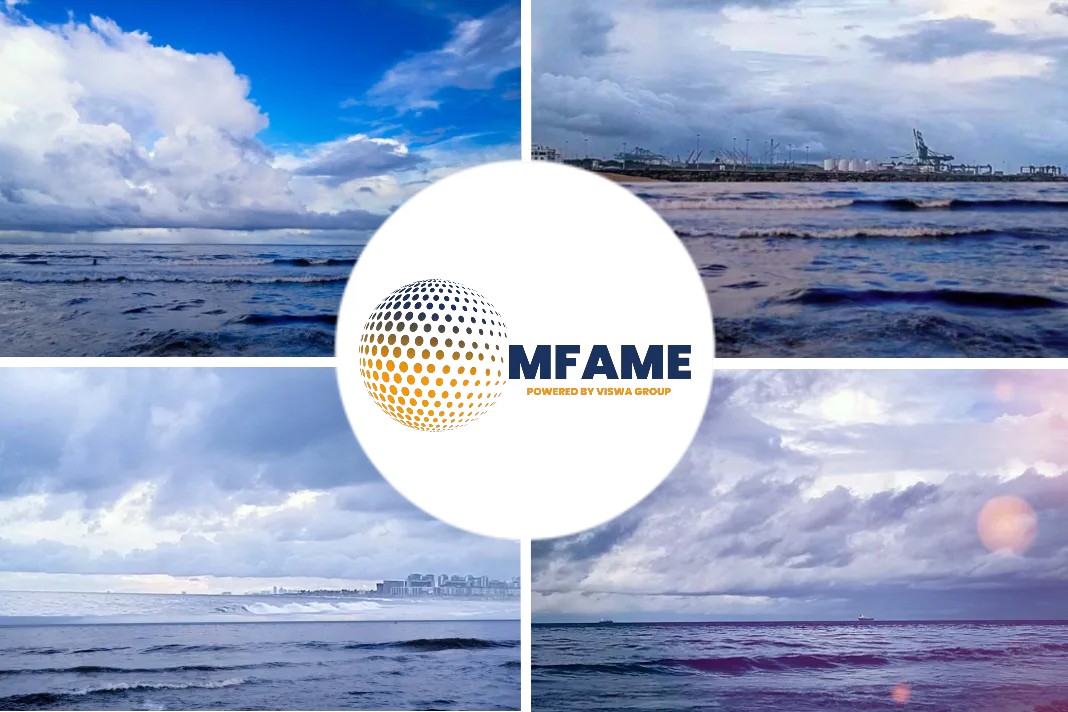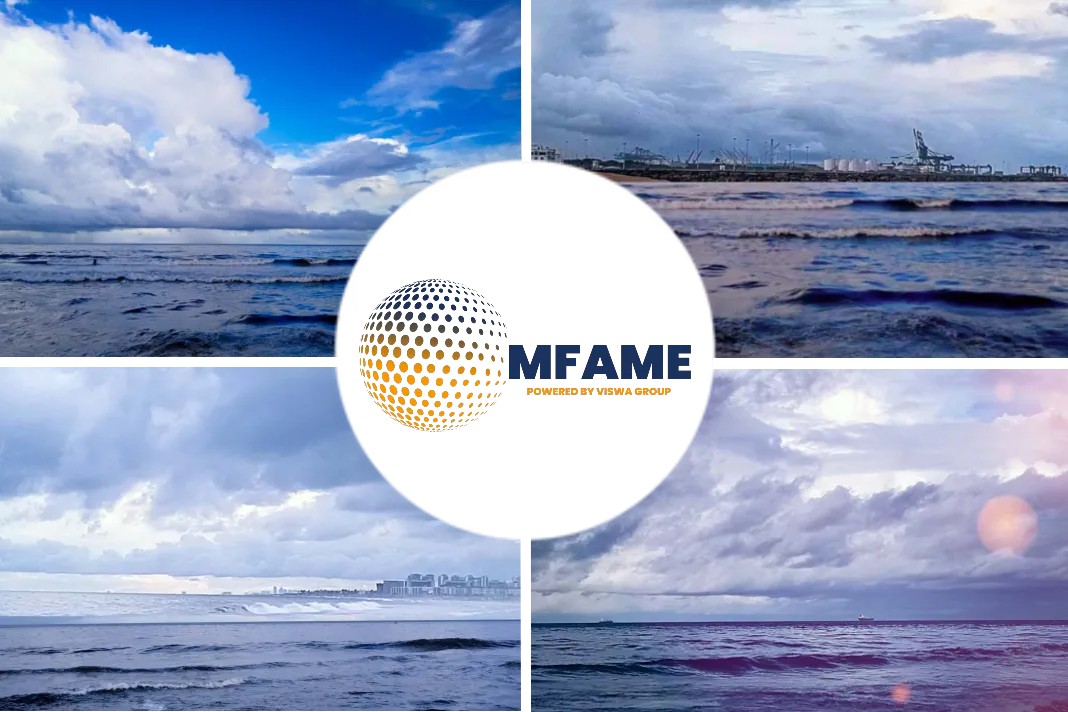- Anchored at Port Hedland on the west coast of Australia, capesize bulk carrier Berge Zugspitze was put through its latest periodical survey in May.
- The Isle of Man Ship Registry deputy director Toby Brooks and principal surveyor David Gooberman monitored the process closely.
- All these happened despite being sitting at their desks nearly 14,000 km away.
According to the article published in Riviera, Isle of Man Ship Registry principal surveyor says remote surveys have proved a game-changer during the Covid-19 pandemic, but different vessel types offer different challenges.
Plain-sailing Remote monitor
The capesize bulk carrier Berge Zugspitze, anchored at Port Hedland on the west coast of Australia was put through its latest periodical survey in May. The Isle of Man Ship Registry deputy director Toby Brooks and principal surveyor David Gooberman monitored the process closely, despite being sat at their desks nearly 14,000 km away.
Live video-streaming
Travel restrictions imposed as a result of the Covid-19 pandemic meant a traditional survey was not an option. But with the support of Berge Zugspitze’s crew, surveyors from classification society DNV GL based in Singapore were able to conduct the survey via live video link. Representatives from the Isle of Man Ship Registry were on hand to review and monitor the process sitting in the Isle of Man.
Equipped connectivity
It was the first annual class and statutory survey to be carried out remotely on an Isle of Man-registered vessel, and its success looks set to help transform the way periodical surveys and general inspections are undertaken throughout the maritime sector.
Mr Gooberman said, “It is fair to say that beforehand we were all quite sceptical, myself included. It is a different way of learning and processing information, but having seen one carried out on a ship with good connectivity and the right equipment, it is clear the process works.”
“During the Berge Zugspitze survey, the process got smoother and smoother as we all got used to the equipment and software – almost to the point where the ship’s staff would anticipate where we’d go next, just as you’d find with a traditional onboard survey.”
General inspection
Having viewed the remote survey process, it was quickly realised this approach would also work for IOM general inspections.
“Prior to Berge Zugspitze we didn’t offer remote inspections as an option because we simply didn’t need to,” said Mr Gooberman. “We would either send someone out to a vessel or we would arrange for an IOM surveyor based in global hotspots to do a general inspection for us. It is, however, something the Isle of Man Ship Registry has been looking at offering for a long time, but Covid-19 pushed it to the fore.”
Key Regard
Good connectivity and access to the necessary IT infrastructure are key to being able to carry out a successful remote survey, according to Mr Gooberman.
Having high-speed wifi makes a significant difference, especially if repeaters are present to carry the signal in areas of the ship that typically have low bandwidth, such as the engineroom.
This does still depend on the connectivity with the vessel, normally through a 4G connection with the shore.
Critical Practicalities
Mr Gooberman said that the preparation is also critical.
A large amount of documentation needs to be sourced and reviewed beforehand, and then a plan drawn up of how the survey will be carried out.
As crew members will be walking around holding cameras, practicalities like risk assessments also need to be considered.
He said “Your eyes only see what the camera allows, you can’t flick your head left or right. That is one of the limitations, so you have to be very clear when explaining what you want to look at. It is vital to go through the process very slowly and methodically so nothing is missed. It is basically a different way of working with the same goals.”
“No one is going to perform a remote survey and sign off on it unless they are satisfied with what they have seen. If we are not seeing the vessel in sufficient detail, we reserve the right to actually put our feet on board to carry out the inspection.”
Tankers and gas carriers challenging
While most remote surveys tend to follow the same process regardless of the type of vessel concerned, tankers and gas carriers are a particular challenge due to having equipment that is Ex-rated.
A normal smartphone can be used to stream video in the vessel’s accommodation area and engineroom, but on deck the only option is to have a device securely enclosed in an Ex-rated case to prevent the risk of explosion.
The Isle of Man Ship Registry has found that although these items are currently rare on board, many companies are thinking of getting these to aid remote inspections, and surveys and trials are ongoing.
Following the success of Berge Zugspitze’s periodical remote survey, the registry has now begun offering remote general inspections to its clients. Seven inspections have been completed on commercial yachts, bulk carriers, a gas carrier and offshore construction vessels (OCVs).
Complexity of OCVs
Each ship type presents its own uniqueness that has to be taken into account for a remote inspection. For example, OCVs are complex vessels with multiple under deck compartments the inspection team would normally walk through as part of a general inspection.
Explanation of the Principal Surveyor
“With the amount of steelwork and divisions in this type of vessel, this can cause challenges with connectivity,” Mr Gooberman said. “This is balanced out by the fact that these vessels are necessarily at the cutting edge of tech due to the nature of the business and would have either wifi repeaters throughout or technicians on board to ensure connectivity is maintained.“
“Recent experience on one of these vessels demonstrated connectivity throughout the majority of the spaces to a high standard due to the dedication of the tech team on board. However, this must be balanced with the signal supplied to the ship by the local provider, over which neither ourselves or the vessel has control.”
Mr Gooberman added “General inspections allow us to meet our obligations as a flag state and make sure vessels are maintained to the standard we expect. Since Covid started, we have not been able to get to see the ships, so general inspections were becoming overdue. We have issued exemption certificates in recent months, but shipowners do not like having requirements outstanding, nor does flag.”
He said “Our clients have been very enthusiastic about remote inspections and the registry team has been inundated with requests. We look at each individually and, if it is appropriate, we will offer that service.”
Concluded Mr Gooberman “Remote surveys and inspections have been in the pipeline for many years, and it was always going to come. Current technology has made it possible and Covid has accelerated the uptake.”
“It won’t suit every vessel. There will be older ships and those with issues where we will still want to go on board, but it is definitely here to stay. It is a more efficient way of working and as a flag state, we think we can deliver a better service to our clients.”
Did you subscribe to our daily newsletter?
It’s Free! Click here to Subscribe!
Source : Riviera
























